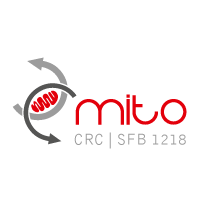Mitochondrial (dys)function in senescent microglia

Christina Ising
CECAD Research Center
University Hospital Cologne
Phone: +49 -221 478 84166
E-Mail: cising2@uni-koeln.de
For more information and contact please visit ISING LAB
Abstract
Alzheimer’s disease (AD) is the most common form of dementia worldwide characterized by chronic neuroinflammation. One of the main risk factors for AD is aging, a process tightly linked to cellular senescence and chronic stress as it occurs in aging and neurodegenerative diseases can be a driver for senescence. Senescent cells are characterized by an irreversible cell cycle arrest, metabolic dysregulation and release of a senescence associated secretory profile (SASP), which includes many proinflammatory factors. While mitochondrial dysfunction is another widely accepted hallmark of senescent cells, the phenotype of mitochondria in stress-induced senescence appears highly complex, cell-type specific and is therefore only incompletely understood. In this project, we will study mitochondrial (dys)function in senescent microglia, the innate immune cells of the brain, and investigate how mitochondria contribute to the initiation of the senescence program.
Project-related publications
Karabag, D., Scheiblich, H., Griep, A., Santarelli, F., Schwartz, S., Heneka, M.T.*, Ising, C.* (2023) Characterizing microglial senescence: Tau as a key player. J Neurochem 166:517-533. doi: 10.1111/jnc.15866
Ising, C., Heneka, M.T. (2023) Chronic inflammation: a potential target in tauopathies. Lancet Neurol 22:371-373. doi: 10.1016/S1474-4422(23)00116-3
